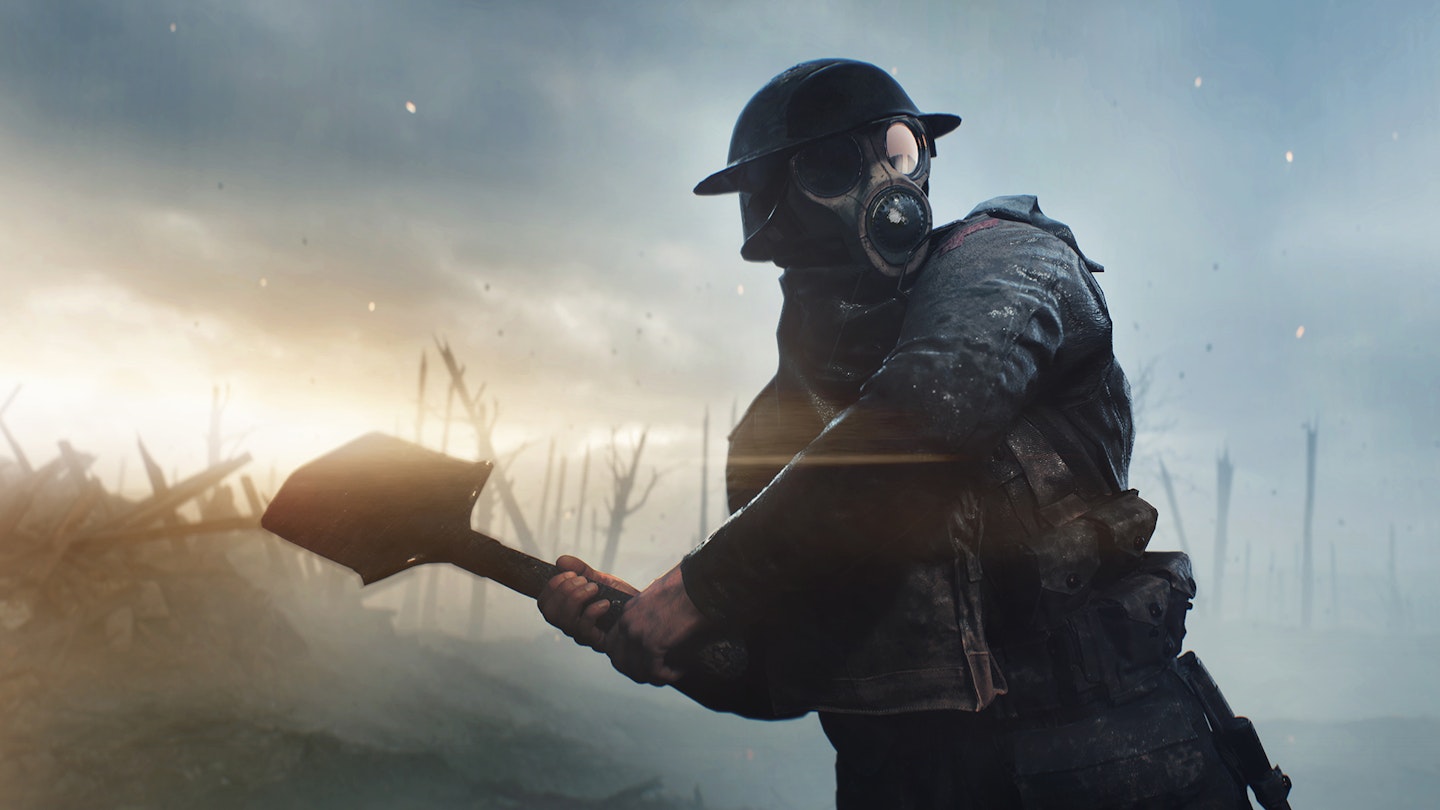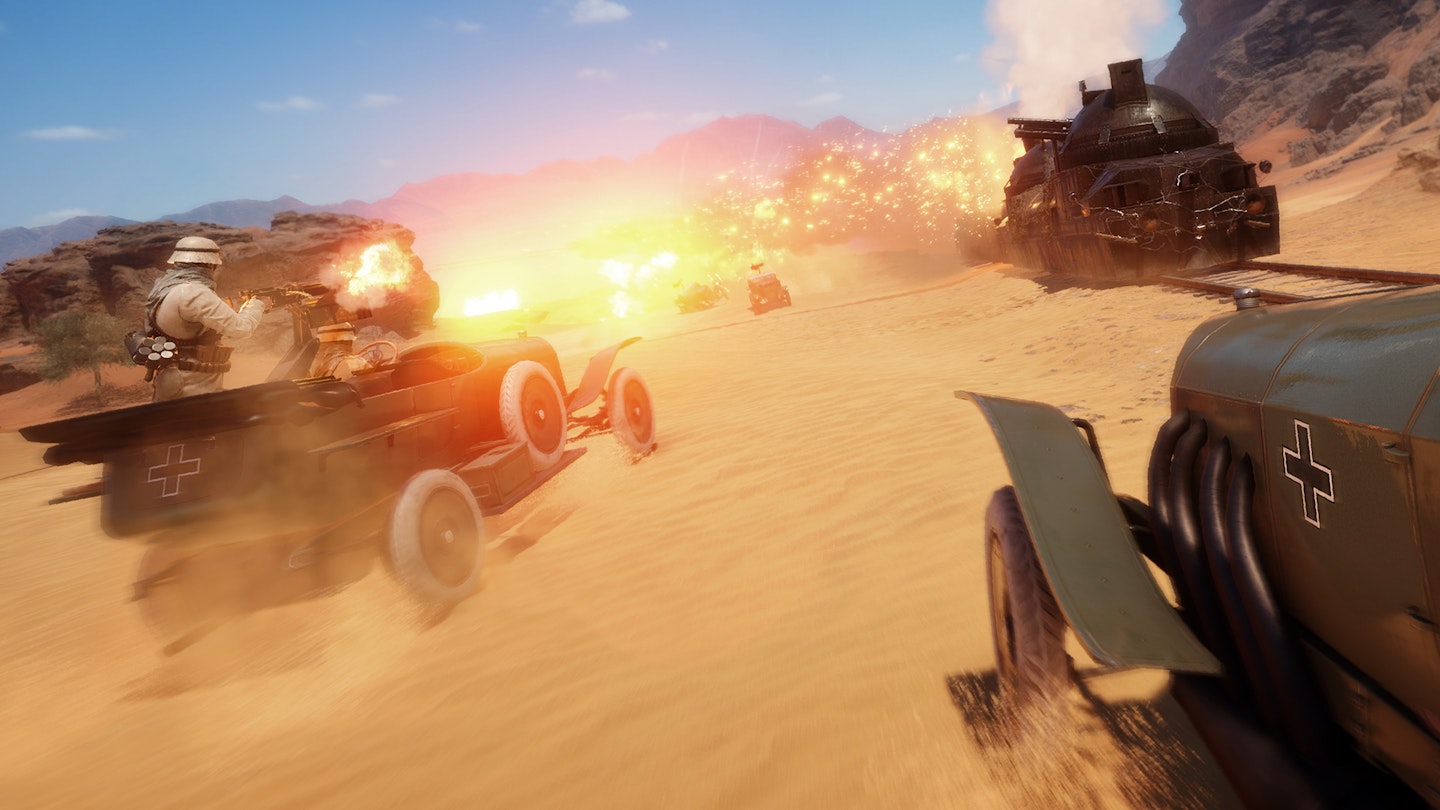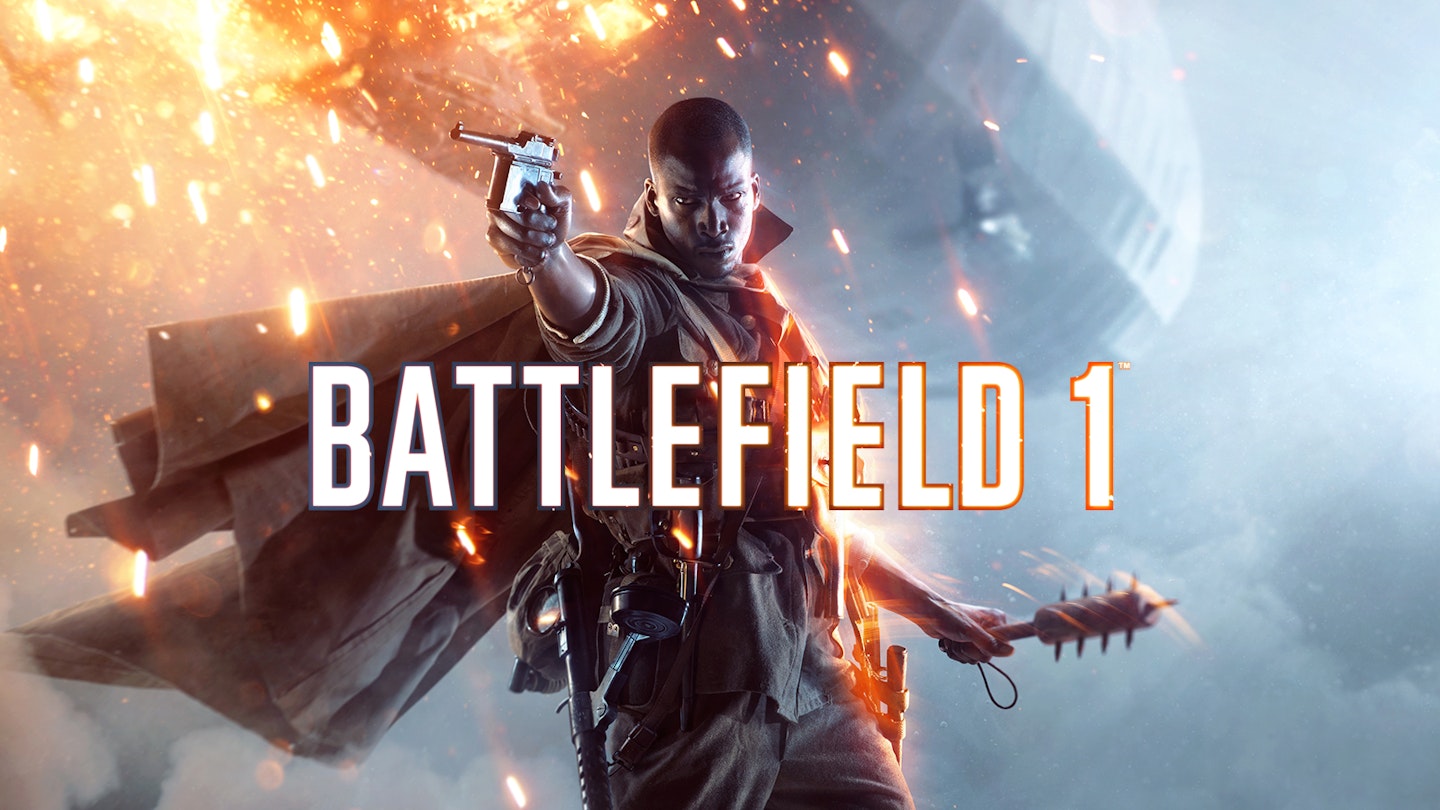Developer DICE took a big risk by opting to set Battlefield 1, the latest instalment of its much-loved FPS series, in World War One. When the game was first announced, the politically correct brigade professed outrage that a game should be based on such a brutal, death-dealing conflict. Meanwhile, the dedicated Battlefield fan-base muttered about no longer having access to up-to-date weaponry. Neither group need have worried as DICE has come up with a tour de force which, graphically and often poignantly, leaves players in no doubt about just how hellish the Great War was, while being and is even more addictive to play than its predecessors.

Battlefield 1 is the first Battlefield in years that doesn’t feel wholly multiplayer-focused. Invigorated by its subject-matter, DICE has come up with an engaging campaign which, instead of focusing on one character, consists of different chapters set in different arenas of what was a truly global war. You might find yourself playing a British rookie piloting a tank in Belgium, an American con-man flying an early fighter-plane above France and London or an Arab woman doing Lawrence of Arabia’s stealth-based dirty work for him.
Against expectations, Battlefield 1 has a meaty, varied and extremely thought-provoking single-player campaign. It doesn't shy away from showing the horror and brutality that pervaded WWI — essentially the first modern war, although it was often fought by those rooted in an earlier style of combat. And the single-player campaign prepares you nicely for the game’s multiplayer action, cleverly smuggling in multiplayer-style sequences where you have to hold objectives against waves of assault, as well as the likes of multi-stage bombing raids and generally teaching you the intricacies of piloting land and air-based vehicles (including horses).
Most Battlefield 1 players will spend the vast amount of their time playing online, and if they don’t find that side of the game satisfying then surely nothing will ever please them — especially after the debacle of Battlefield 4, which was a buggy mess at launch. All the tried-and-tested multiplayer modes return, most notably the objective-based Conquest and Domination modes, in which your team must secure strategic points on the map (Domination involves smaller teams and smaller maps). Both those modes have been given a twist by the appearance of so-called Behemoths, given to whichever side is losing in the late stages of a battle: depending on the map, they might take the form of a heavily armed Zeppelin or a warship. Team Deathmatch, naturally, returns, as does Rush, in which attackers gain extra troops with every objective they overrun, and the action moves swiftly, really feeling like a facsimile of actual warfare.

There’s an intriguing new mode called War Pigeons, set on maps unusually confined for a Battlefield game, where 64 player arenas are the norm. This has two teams scrapping intensely over special carrier pigeons (whose back-story is explained in the Arabian chapter of the campaign); each team has to capture them, then hold onto them for long enough to attach and dispatch a message. It’s intense, brutal, close-quarters stuff.
The flip-side to War Pigeons is Operation, which lumps several modes together in sprawling large-scale battles that take place across a number of connected maps (and for which you must choose whether to defend or attack). Operations really do leave you feeling like you’ve been involved in actual battles, and emphasise what Battlefield has always done better than its peers: deliver the sense of a conflict taking place across large areas, on several fronts.
Another change-up in the multiplayer places much more emphasis on the class of soldier you choose to play as, with typical classes like assault, scout and medic augmented by more exotic ones such as special vehicle classes for fighting in tanks, planes or on horseback. The tanks and planes are superb to pilot, and performing on-the-fly repairs turns out to be a key mechanic. You also have a chance to fight as some of the more outrageous troops you encounter in campaign mode — most notably heavily armoured flame-troopers — thanks to pick-ups which appear on the battlefield.

Technologically, Battlefield 1 is a marvel. The potential of DICE’s latest Frostbite engine shone through in Star Wars Battlefront, but Battlefield 1 pushes it to new limits. Most of what you see in each map is destructible, so what start out as pristine villages end up as blackened ruins; the first time you get killed by falling masonry, you will curse but be secretly impressed. The game’s particle effects are particularly striking: smoke from explosions can be used as a means of cover, and you have to keep an eye open for gas, which is frequently deployed.
This is a hair-raising depiction of perhaps the most fearsome and harrowing of all wars — but one which never lapses into jingoism and certainly doesn’t glory in the brutality of its subject-matter. But despite Battlefield 1’s refusal to glamorise World War One in any manner whatsoever, it still manages to be a hugely seductive and addictive videogame, which deserves to sell in the same sort of numbers as the likes of Call of Duty (Infinite Warfare will do well to even come close to such such a visceral experience). Battlefield 1 has set a new benchmark for multiplayer first-person shooters, and that's no small thing.
